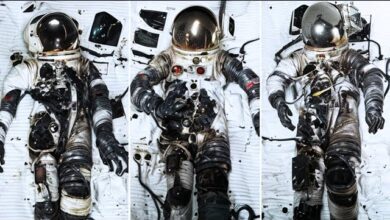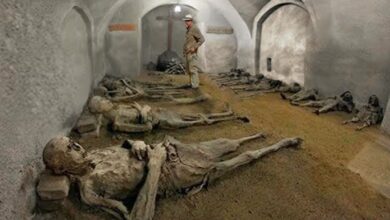Ötzi the Iceman: A 5,000-Year-Old True Crime Murder Mystery | Full Documentary | NOVA | PBS

The Iceman, found in a glacier and preserved for over 5,000 years, is possibly the most studied human specimen in history. Discovered in 1991 by hikers in the Alps, Ötzi was initially thought to be a mountaineer or soldier. However, clues like his stone knife, grass shoes, and arrows revealed he lived in ancient times.
New technology is unlocking secrets about Ötzi’s life, including his genetic origins and health. Researchers learned he had brown eyes, dark hair, and suffered from Lyme disease and heart disease. Initially thought to have frozen to death, it was later discovered that he had an arrowhead lodged in his shoulder, suggesting he was shot and left to die.
Scientists are carefully studying Ötzi to avoid contamination, as he’s kept in a sterile environment. Artist Gary Staab has been tasked with creating a detailed replica of Ötzi for research and public education. Using CT scans, they created a 3D print of Ötzi’s body, which will serve as a base for the sculpture.
Ötzi’s body provides insights into his lifestyle. Analysis shows he had little upper body muscle strain, hinting he might not have farmed, but severe wear on his leg muscles suggests he was a traveler, possibly involved in trade. Scientists continue to explore his past, including his final moments in the mountains.
**Ötzi the Iceman’s Last Meal and Lifestyle:**
– Scientists analyzed Ötzi’s stomach contents, revealing he had eaten wild ibex meat and einkorn wheat shortly before his death. This indicates he was both a hunter and a farmer, presenting a complex picture of his lifestyle.
– Pollen found in his stomach suggests he had been active in mountainous terrain within 48 hours of his death, painting a picture of a man who was adventurous until the very end.
**Gary Staab’s Replication of Ötzi:**
– In Kearney, Missouri, model maker Gary Staab specializes in creating replicas of extinct creatures for museums.
– He faces a significant challenge in replicating Ötzi accurately, utilizing advanced 3D printing technology as a starting point but relying heavily on hand-sculpting to achieve detailed textures and features.
– The process is labor-intensive, involving sculpting, molding, painting, and adding intricate surface details over several months.
**Challenges in Sculpting Ötzi:**
– The team must recreate Ötzi’s skin texture, focusing on the dermis layer as much of the epidermis was lost due to environmental factors.
– They use flexible texture pads to imprint realistic skin patterns onto the clay, which requires thousands of considerations to achieve authenticity.
**Ötzi’s Tattoos:**
– Ötzi is the oldest known tattooed mummy, with a total of 61 tattoos. Recent advancements in imaging technology have allowed researchers to catalog these tattoos accurately.
– The tattoos appear to be therapeutic rather than decorative, located in areas corresponding to Ötzi’s ailments, suggesting they may have been used to alleviate pain.
**Medicinal Mushrooms:**
– Researchers also explore the types of mushrooms Ötzi carried, particularly birch polypore, known for its antiseptic properties, and tinder fungus, used for fire-starting.
– These mushrooms likely served dual purposes: topical treatments for wounds and potential ingestion for pain relief.
**Gary’s Artistic Process:**
– The creation of Ötzi’s replica involves a meticulous process, especially concerning the complex details of his face, which is crucial for viewer engagement.
– Staab emphasizes the importance of accuracy, stating that his intimate work with Ötzi’s features might allow him to understand the Iceman’s visage better than even his family could.

Scientists studied DNA from ancient bones across Europe, revealing that Ötzi the Iceman was more closely related to ancient farmers than hunter-gatherers. His DNA matched that of farmers who lived in Europe nearly 2,000 years before his time, indicating that these farmers likely migrated from what is now Turkey.
Comparing Ötzi’s DNA to modern samples showed surprising results: his closest living relatives are found on the islands of Sardinia and Corsica. However, this doesn’t mean Ötzi was Sardinian; rather, he shared DNA patterns with many Europeans due to early farmer migrations.
Over 5,000 years, Europe experienced various waves of immigration, but Sardinia remained relatively stable genetically since the arrival of early farmers, making its inhabitants Ötzi’s closest relatives today.
Meanwhile, Gary Staab worked on creating an accurate replica of Ötzi. When Albert Zink, an expert on Ötzi, examined the model, he was impressed by its realism, saying it captures the essence of a person who lived long ago.
With Zink’s approval, Gary presented the replica at Cold Spring Harbor Laboratory, where it was met with excitement. Ötzi’s story, aided by advancements in DNA technology, continues to reveal mysteries about human history, making him an enduring figure in research and popular culture.








